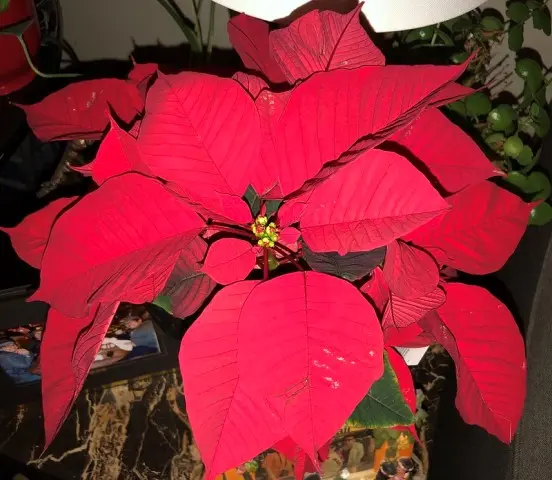Poinsettias (Euphorbia pulcherrima) are synonymous with the holiday season, adorning homes and festive displays with their vibrant red bracts. One common question that arises when caring for these iconic plants is, “When should I put my poinsettia in the dark?” This query stems from the belief that subjecting poinsettias to darkness initiates the process of coloration, turning the bracts from green to their signature red hue.
The idea of putting poinsettias in the dark is linked to their photoperiod sensitivity. In their natural habitat, poinsettias are exposed to shorter days and longer nights during the fall and winter months. This change in light triggers the production of pigments in the bracts, resulting in the characteristic red coloration. To replicate these conditions indoors, some enthusiasts follow a dark treatment regimen.

The general recommendation is to start the dark treatment around eight weeks before you want your poinsettia to display its vivid colors. This typically corresponds to late September or early October, depending on when you want the plant to reach its peak beauty. During this period, exposing the poinsettia to complete darkness for 12-14 hours each night is thought to stimulate the color change.
However, it’s crucial to understand that the dark treatment method is just one approach among various strategies for encouraging poinsettias to bloom. The efficacy of this technique can vary based on factors such as the poinsettia variety, environmental conditions, and the overall care the plant receives.
The dark treatment process involves placing the poinsettia in a completely dark room or covering it with a lightproof bag or box each night. This means no artificial light, streetlight, or even brief exposure to light should interrupt the darkness. The plant should be returned to its usual bright, indirect light during the day.
While the dark treatment is a traditional method, it’s important to note that advancements in breeding techniques have led to the development of poinsettia varieties that may not require this treatment to achieve vibrant colors. These newer varieties are often bred to be more adaptable to varying light conditions, making them suitable for indoor cultivation without the need for extensive darkness.
It’s essential to be mindful of the potential stress that extended periods of darkness can impose on a plant. While poinsettias are generally hardy, subjecting them to drastic changes in light conditions may impact their overall health. If not executed correctly, the dark treatment can lead to issues such as leaf drop, delayed flowering, or even failure to bloom.
Additionally, the success of the dark treatment is contingent on other critical care factors. Poinsettias thrive in well-draining soil, and overwatering is a common pitfall that can lead to root rot. Maintaining a consistent watering schedule, allowing the soil to dry slightly between waterings, is crucial for poinsettia health.
Temperature is another key consideration. Poinsettias prefer a warm environment and are sensitive to drafts and extreme temperature fluctuations. Keeping the plant away from cold drafts and sudden temperature drops can prevent stress and promote healthy growth.
Fertilization is yet another aspect to monitor. While poinsettias don’t require frequent feeding, providing a balanced, water-soluble fertilizer every 2-4 weeks during the growing season (spring and summer) can support robust development.
It’s essential to approach the dark treatment method with a thorough understanding of the specific needs of your poinsettia and a commitment to providing comprehensive care throughout its growth cycle. Additionally, as more research is conducted on poinsettia cultivation, new recommendations and techniques may emerge, influencing how enthusiasts approach the process of encouraging these plants to bloom.
In conclusion, the question of when to put your poinsettia in the dark is rooted in the desire to recreate the natural conditions that induce coloration in the bracts. While the dark treatment method has been a longstanding tradition, advancements in breeding and a better understanding of poinsettia care have provided alternatives. As you embark on the journey of nurturing your poinsettia, consider the specific needs of your plant, stay attentive to its care requirements, and be open to adapting your approach based on emerging insights in horticulture.
MORE POSTS: How to Propagate Philodendron El Choco Red?
Pin this “When Should I Put My Poinsettia in The Dark?”


